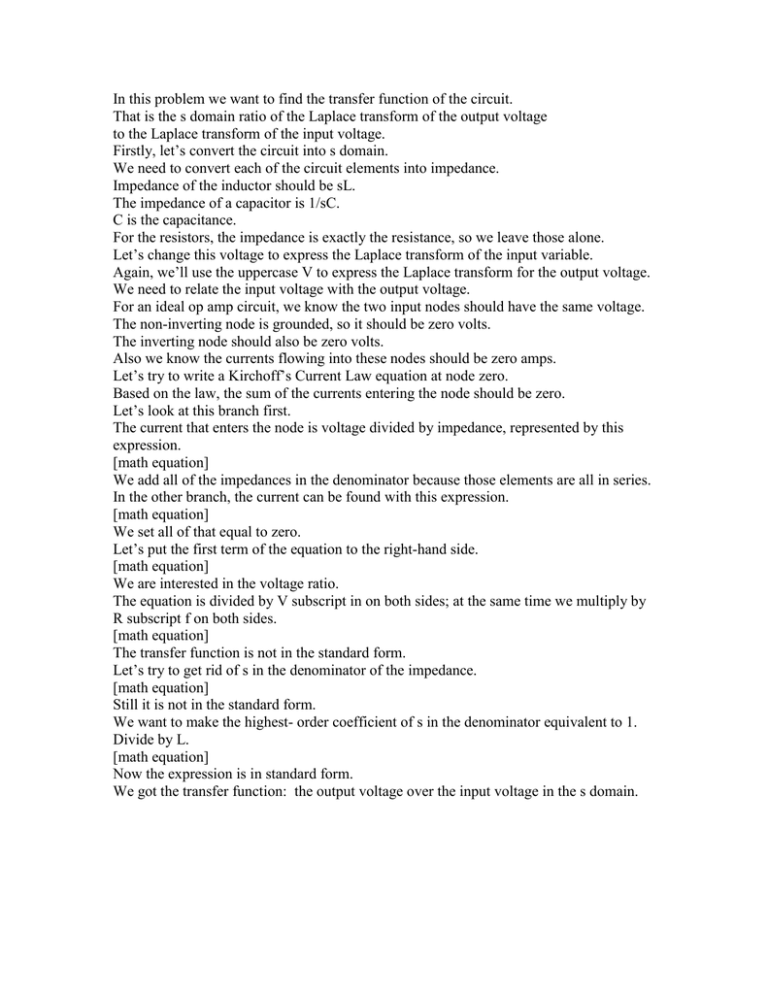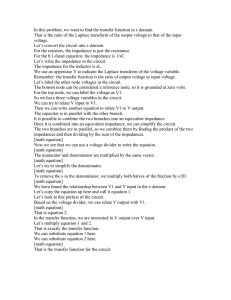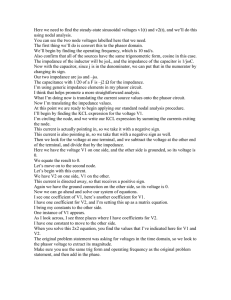In this problem we want to find the transfer function... That is the s domain ratio of the Laplace transform...
advertisement

In this problem we want to find the transfer function of the circuit. That is the s domain ratio of the Laplace transform of the output voltage to the Laplace transform of the input voltage. Firstly, let’s convert the circuit into s domain. We need to convert each of the circuit elements into impedance. Impedance of the inductor should be sL. The impedance of a capacitor is 1/sC. C is the capacitance. For the resistors, the impedance is exactly the resistance, so we leave those alone. Let’s change this voltage to express the Laplace transform of the input variable. Again, we’ll use the uppercase V to express the Laplace transform for the output voltage. We need to relate the input voltage with the output voltage. For an ideal op amp circuit, we know the two input nodes should have the same voltage. The non-inverting node is grounded, so it should be zero volts. The inverting node should also be zero volts. Also we know the currents flowing into these nodes should be zero amps. Let’s try to write a Kirchoff’s Current Law equation at node zero. Based on the law, the sum of the currents entering the node should be zero. Let’s look at this branch first. The current that enters the node is voltage divided by impedance, represented by this expression. [math equation] We add all of the impedances in the denominator because those elements are all in series. In the other branch, the current can be found with this expression. [math equation] We set all of that equal to zero. Let’s put the first term of the equation to the right-hand side. [math equation] We are interested in the voltage ratio. The equation is divided by V subscript in on both sides; at the same time we multiply by R subscript f on both sides. [math equation] The transfer function is not in the standard form. Let’s try to get rid of s in the denominator of the impedance. [math equation] Still it is not in the standard form. We want to make the highest- order coefficient of s in the denominator equivalent to 1. Divide by L. [math equation] Now the expression is in standard form. We got the transfer function: the output voltage over the input voltage in the s domain.








